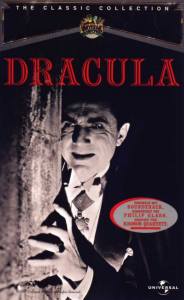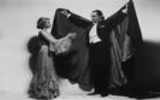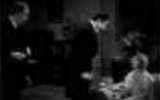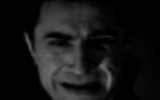
|
Derzeit online |
||
|
386
|
Filme | |
|
125
|
Bücher | |
|
34
|
Biographien | |
|
50
|
Hörspiele | |
|
|
||

![]()
| Dracula
The businessman Renfield arrives in a far-off transylvanian village. Here, he waits for a coach that is supposed to bring him over the Borgo pass to the castle of Count Dracula, he tells the horrified inhabitants of the village. Renfield doesn't care for their reservations. Soon the coach arrives and a wild and rapid trip over dangerous mountain roads begins. Renfield wants to warn the coachman to ride slower, but only sees a bat hovering over the coach. On his arrival at the castle he is let in and goes through creaking doors. At the landing of a stairway an uncanny figure awaits him and bids him to come up. Renfield is served wine mixed with a soporific and sinks to the ground. Three of Draculas brides enter the room, Renfield turns insane, Dracula goes to England. After
his arrival in England, Dracula starts to do his foul work in the
London upper-class society. Here he is especially attached to the
Seward family and friends. Lucy Weston, the girlfriend of Sewards
daughter Mina, becomes his first victim. Soon the blood sucker also
becomes greedy for Minas throat, but the cunning Professor Van Helsing,
who sees through the counts secret and Minas fiancée Jonathan
Harker can prevent worse and dispatch the Count.
For example we do not see Jonathan Harkers journey to the castle of the monster, but Renfields. In the second part, which takes place in London, the movie rather follows the play of Hamilton Deane, in which Bela Lugosi already appeared on the stage as protagonist. By this Tod Browning und script author Garret Fort leave out a great number of great scenes that Stokers book would have had to offer. But this was probably done in accordance with the censorship of the epoch. We should not forget that the movie was made in the prudish USA during the time of prohibition. It is only second-hand that the spectator gets to know about the death of the Count. At the time, the cinema-goer surely experienced comfortable shudders of horror and the movie became a block buster. Today
many of the horror elements used in the movie may only make you
smile, for example the appearance of an armadillo in the count's
castle, but nevertheless, Lugosis interpretation of the Count makes
the movie unforgettable.
|
|||||||||||||||||||||||||||||||||||
|
|||||||||||||||||||||||||||||||||||




